|
|
|
 |
 |
 |
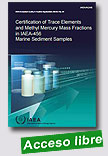 |
Certification of Trace Elements and Methyl Mercury Mass Fractions in IAEA-456 Marine Sediment Samples
IAEA Analytical Quality in Nuclear Applications Series, 2016, 46 p.
Many laboratories are involved in the production of local or regional environmental monitoring data leading, in many cases, to wider assessments. These laboratories may develop and validate new analytical methods, study the environmental impact of human activities, provide services to other organizations, etc. Due to the needs to base scientific
|
conclusions on valid and internationally comparable data and to provide policy-makers with correct information on the state of the environment, it is indispensable to ensure the quality of the data produced by each laboratory.
The Marine Environmental Studies Laboratory (MESL) of the NAEL has the programmatic responsibility to provide assistance to Member States’ laboratories in maintaining and improving the reliability of analytical measurement results, both in trace elements and organic pollutants. This is accomplished through the provision of certified reference materials (CRMs) of marine origin, validated analytical procedures, training in the implementation of internal quality control, and through the evaluation of measurement performance by the organization of worldwide and regional interlaboratory comparisons. IAEA’s subprogram ‘Reference Products for Science and Trade’ represents an important benchmark in upgrading the quality of laboratory performances and assessing the validity of the analytical methods used for marine monitoring studies in the Member States.
Laboratories need to be able to check the performance of their methods for the determination of trace elements in difficult matrices such as marine sediments. This is also true for standardized methods, the use of which does not guarantee accurate results. It is widely accepted that laboratories need to demonstrate their proficiency in the applicability of standard methods, for example, by using certified reference materials (CRMs). While there are several CRMs certified for trace elements, there still is a noticeable lack of matrix CRMs.
The work presented in this report refers exclusively to the certification of the total content of trace elements and methyl mercury in marine sediment. This material is a certified reference material (CRM), released in November 2014 by the IAEA.
Extraído de: http://www-pub.iaea.org/MTCD/Publications/PDF/IAEA-AQ-45_web.pdf
|
 |
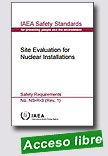 |
Site Evaluation for Nuclear Installations
IAEA Safety Standards, 2016, 27 p
This publication establishes requirements and provides criteria for ensuring safety in site evaluation for nuclear installations. The Safety Guides on site evaluation listed in the references section provide recommendations on how to meet the requirements established in this publication. A review of Safety Requirements publications was commenced in 2011 following the accident in the Fukushima Daiichi nuclear power plant in Japan. The review revealed no significant areas of |
weakness and resulted in just a small set of amendments to strengthen the requirements and facilitate their implementation, which are contained in the present publication.
Extraído de: http://www-pub.iaea.org/books/IAEABooks/10882/Site-Evaluation-for-Nuclear-Installation
|
 |
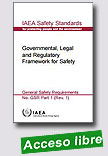 |
Governmental, Legal and Regulatory Framework for Safety
IAEA Safety Standards Series, 2016, 42 p.
This publication establishes requirements in respect of the governmental, legal and regulatory framework for safety. It covers the essential aspects of the framework for establishing a regulatory body and taking other actions necessary to ensure the effective regulatory control of facilities and activities utilized for peaceful purposes. Other responsibilities and functions, such as liaison within the global safety regime and on support services for safety (including radiation protection), emergency
|
preparedness and response, nuclear security, and the State system of accounting for and control of nuclear material, are also covered. A review of Safety Requirements publications was commenced in 2011 following the accident in the Fukushima Daiichi nuclear power plant in Japan. The review revealed no significant areas of weakness and resulted in just a small set of amendments to strengthen the requirements and facilitate their implementation, which are contained in the present publication.
Extraído de: http://www-pub.iaea.org/books/IAEABooks/10883/Governmental-Legal-and-Regulatory-Framework-for-Safety
|
 |
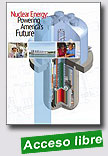 |
This booklet explains today’s nuclear energy technology, the processes and safety practices associated with it, and the benefits it provides. It includes information about how nuclear power plants work, the cost of producing electricity, nuclear energy’s environmental benefits, the mining and production of uranium fuel, the safe management of used fuel, nuclear plant security, and the economics of nuclear energy.
|
Extraído de: http://www.nei.org/Master-Document-Folder/Publications-and-Brochures/Brochures/Nuclear-Energy-Powering-America-s-Future |
 |
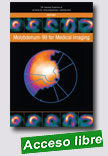 |
Molybdenum-99 for Medical Imaging
Committee on State of Molybdenum-99 Production and Utilization and Progress Toward Eliminating Use of Highly Enriched Uranium; Nuclear and Radiation Studies Board; Division on Earth and Life Studies; National Academies of Sciences, Engineering, and Medicine, 2016, 264 p.
The decay product of the medical isotope molybdenum-99 (Mo-99), technetium-99m (Tc-99m), and associated medical isotopes iodine-131 (I-131) and xenon-133 (Xe-133) are used worldwide for medical diagnostic imaging or therapy. The
|
United States consumes about half of the world’s supply of Mo-99, but there has been no domestic (i.e., U.S.-based) production of this isotope since the late 1980s. The United States imports Mo-99 for domestic use from Australia, Canada, Europe, and South Africa.
Mo-99 and Tc-99m cannot be stockpiled for use because of their short half-lives. Consequently, they must be routinely produced and delivered to medical imaging centers. Almost all Mo-99 for medical use is produced by irradiating highly enriched uranium (HEU) targets in research reactors, several of which are over 50 years old and are approaching the end of their operating lives. Unanticipated and extended shutdowns of some of these old reactors have resulted in severe Mo-99 supply shortages in the United States and other countries. Some of these shortages have disrupted the delivery of medical care. Molybdenum-99 for Medical Imaging examines the production and utilization of Mo-99 and associated medical isotopes, and provides recommendations for medical use.
Extraído de: https://download.nap.edu/cart/download.cgi?record_id=23563 |
 |
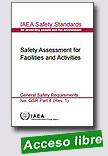
|
Safety Assessment for Facilities and Activities
IAEA Safety Standards Series, 2016, 38 p.
This publication describes the generally applicable requirements to be fulfilled in safety assessments for facilities and activities, with special attention paid to defence in depth, quantitative analyses and the application of a graded approach to the ranges of facilities and of activities that are addressed. The requirements provide a consistent and coherent basis for safety assessments, facilitating the transfer of good practices between organizations. A review of Safety Requirements |
publications was commenced in 2011 following the accident in the Fukushima Daiichi nuclear power plant in Japan. The review revealed no significant areas of weakness and resulted in just a small set of amendments to strengthen the requirements and facilitate their implementation, which are contained in the present publication.
Extraído de: http://www-pub.iaea.org/books/IAEABooks/10884/Safety-Assessment-for-Facilities-and-Activities
|
 |
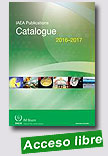 |
IAEA Publications Catalogue 2016/17
IAEA, August 2016, 95 p.
The IAEA serves as the world’s intergovernmental forum for scientific and technical cooperation in the nuclear field . It was set up as the world’s “Atoms for Peace” organization in 1957 within the United Nations family . The IAEA works with its Member States and multiple partners worldwide to promote safe, secure and peaceful nuclear technologies .
The IAEA’s mission is guided by the interests and needs of Member States, strategic plans and the vision embodied in the
|
IAEA Statute . Three main pillars — or areas of work — underpin the IAEA’s mission: Safety and Security; Science and Technology; and Safeguards and Verification .
IAEA Publications - The IAEA is one of the leading publishers in the field of nuclear science and technology, with titles on nuclear and radiological safety, emergency response, nuclear power, nuclear medicine, nuclear waste management, nuclear law and safeguards as well as relevant topics in food and agriculture, earth science, industry and the environment .
Key publications include the IAEA Safety Standards, which detail the principles of safety for protection against ionizing radiation, and IAEA Safety Reports, which describe good practices and give practical examples and detailed methods that can be used to meet safety requirements
Extraído de: http://www-pub.iaea.org/MTCD/publications/PDF/PublicationsCatalogue.pdf
|
 |
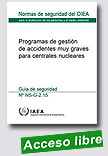 |
Programas de gestión de accidentes muy graves para centrales nucleares
IAEA, 2016, 96 p.
En la presente guía de seguridad se formulan recomendaciones para cumplir los requisitos relativos a la gestión de accidentes, incluida la gestión de accidentes muy graves, que se establecen en la sección 5 de la Referencia, en las secciones 3 y 5 de la Referencia y en la sección 4 de la Referencia.
En esta guía de seguridad se formulan recomendaciones
|
para la elaboración y aplicación de un programa de gestión de accidentes.
1.7. La presente guía de seguridad está destinada fundamentalmente a las entidades explotadoras de las centrales nucleares, las compañías de electricidad y sus entidades de apoyo; también puede ser utilizada por los órganos reguladores para facilitar la preparación de los requisitos nacionales de reglamentación correspondientes.
Extraído de: http://www-pub.iaea.org/MTCD/Publications/PDF/Pub1376s_web.pdf
|
 |
|

|
At Work: Annual Report 2016
World Nuclear Association, June 2016, 32 p.
At Work is an annual report of the World Nuclear Association's activities. You will find details of the Association's everyday work and plans for the year ahead.The report contains forewords by the Director General and Chairman, and details on our Secretariat, Membership, Working Group and Communication activities.
|
Extraído de: http://www.world-nuclear.org/our-association/publications/annual-reports-and-brochures/at-work-annual-report-2015-(1).aspx
|
 |
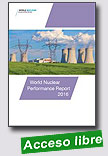 |
World Nuclear Performance Report 2016
World Nuclear Association, June 2016, 28 p.
At the start of 2015 there were 436 operable reactors around the world and by year-end there were 439. This increase in reactor numbers came despite the retirement of seven units during the year. A larger number of nuclear power units are under construction than at any other time in the last 25 years, and with another ten new reactors coming online – also a 25-year record for the industry – 2015 demonstrated improving new build performance all round. The existing global fleet . |
generated roughly 10% of the world’s electricity, making up around one-third of the world’s low-carbon electricity supply
Extraído de: http://www.world-nuclear.org/our-association/publications/online-reports/world-nuclear-performance-report-2016.aspx
|
 |
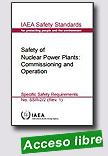 |
Safety of Nuclear Power Plants: Commissioning and Operation
IAEA Safety Standards Series, 2016, 47 p.
This publication describes the requirements to be met to ensure the safe operation of nuclear power plants. It takes into account developments in areas such as long term operation of nuclear power plants, plant ageing, periodic safety review, probabilistic safety analysis and risk informed decision making processes. In addition, the requirements are governed by, and must apply, the safety objective and safety principles .
|
that are established in the IAEA Safety Standards Series No. SF-1, Fundamental Safety Principles. A review of Safety Requirements publications was commenced in 2011 following the accident in the Fukushima Daiichi nuclear power plant in Japan. The review revealed no significant areas of weakness and resulted in just a small set of amendments to strengthen the requirements and facilitate their implementation, which are contained in the present publication
Extraído de: http://www-pub.iaea.org/books/IAEABooks/10886/Safety-of-Nuclear-Power-Plants-Commissioning-and-Operation
|
 |
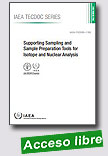 |
Supporting Sampling and Sample Preparation Tools for Isotope and Nuclear Analysis
IAEA TECDOC, 2016, 70 p.
Nuclear and related techniques can help develop climate-smart agricultural practices by optimizing water and nutrient use efficiency, assessing organic carbon sequestration in soil, and assisting in the evaluation of soil erosion control measures. Knowledge on the behaviour of radioactive materials in soil, water and foodstuffs is also essential in enhancing nuclear emergency preparedness and response.
|
Appropriate sampling and sample preparation are the first steps to ensure the quality and effective use of the measurements and this publication provides comprehensive detail on the necessary steps.
Extraído de: http://www-pub.iaea.org/books/IAEABooks/10991/Supporting-Sampling-and-Sample-Preparation-Tools-for-Isotope-and-Nuclear-Analysis
|
 |
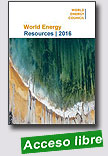 |
World Energy Resources 2016
World Energy Council, October 2015, 1.028 p.
The World Energy Resources have been produced by the World Energy Council for over 80 years. The details and analysis provide a unique data set that allows governments, private sector and academia to better understand the reality of the energy sector and the resource developments. The assessments are compiled with our network of member committees in over 90 countries along with a panel of experts who provide insights from across the globe. With information |
covering more than 180 countries, this is the 24th edition of the World Energy Resources report.
The report includes 13 chapters, which cover coal, oil, gas, uranium & nuclear, hydropower, bioenergy, waste-to-energy, solar, geothermal, wind, marine and two cross cutting topics, energy storage and CC(U)S. The reputation and value of the study rests on three main factors: the study presents unbiased data and facts from an independent and impartial organisation, it covers technological, economic and environmental aspects of conventional and renewable sources, and it provides assessments on global, regional and country levels prepared by an international network of respected experts.
Executive Summary_World Energy Resources 2016
Full report_World Energy Resources 2016
Extraído de: http://www.worldenergy.org/publications/2016/world-energy-resources-2016/
|
| |
| |
|
|
|
|
|
|
|
